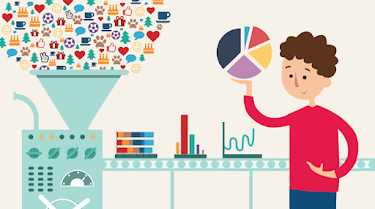Blockchain is a digital ledger technology that allows data to be recorded and shared in a secure and transparent way. It consists of a decentralized database that is maintained and updated by a network of computers, rather than being controlled by a single entity.
The data on a blockchain is stored in blocks, which are linked together in chronological order to form a chain. Each block contains a unique code, or "hash," that identifies it and the data it contains. Once a block is added to the chain, it cannot be altered or deleted, ensuring the integrity of the data.
One of the key features of blockchain is its ability to create trust and transparency in transactions. For example, blockchain can be used to create a secure and transparent record of financial transactions, or to track the movement of goods through a supply chain.
Blockchain technology has many potential applications beyond finance and supply chain management. It can be used to create secure voting systems, to protect intellectual property rights, and to enable peer-to-peer energy trading.
However, there are also challenges to the widespread adoption of blockchain technology, including issues related to scalability, interoperability, and regulation. As the technology continues to evolve, it is likely to be used in increasingly innovative ways, transforming the way we record and share data.













No comments:
Post a Comment